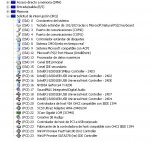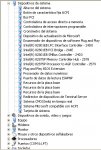Hi everyone:
I'm considering getting the P4C800-E Deluxe and have a few question. Has anyone successfully run this card with everything enabled except with sound disabled (does it need to be disabled or does it autodetect you have your own card?)? And then I guess I'll have a GeForceFX 5900 Ultra 256MB as well as a SoundBlaster Audigy 2 Platinum eX and Adaptec AHA2940UW SCSI controller. Will there be any issues of IRQ/DMA sharing with these extras as I experienced with the older ABIT PIII Motherboards with the built in HPT RAID controllers where the HPT will not allow their resources to be shared with anything at all on any PCI slot that shares with it. Also, how does this board compare to the Gigabyte GA-8KNXP since I noticed on the Gigabyte, the Firewire controller is TI while on this one, it's VIA, are there any major differences? Also, for P-ATA RAID, is the Promise capable of single devices and does it work with stuff like CD/DVD-ROMs? As for the BIOS, I noticed that ASUS which used to use Award is now using AMI. Award/Phoenix (they are the same company now) are supposedly better BIOSes than AMI, atleast AMI had a bad reputation with the WinBIOS, is the AMI Bios any good though? I got 4 sticks of Hynix PC3200 512MB CL3 matched modules along with a P4-3.2Ghz which I bought from my friend who got these as part of the Dell Dimension XPS machines while he went and bought Corsair memory and a slower CPU. Any help would be greatly appreciated.
I'm considering getting the P4C800-E Deluxe and have a few question. Has anyone successfully run this card with everything enabled except with sound disabled (does it need to be disabled or does it autodetect you have your own card?)? And then I guess I'll have a GeForceFX 5900 Ultra 256MB as well as a SoundBlaster Audigy 2 Platinum eX and Adaptec AHA2940UW SCSI controller. Will there be any issues of IRQ/DMA sharing with these extras as I experienced with the older ABIT PIII Motherboards with the built in HPT RAID controllers where the HPT will not allow their resources to be shared with anything at all on any PCI slot that shares with it. Also, how does this board compare to the Gigabyte GA-8KNXP since I noticed on the Gigabyte, the Firewire controller is TI while on this one, it's VIA, are there any major differences? Also, for P-ATA RAID, is the Promise capable of single devices and does it work with stuff like CD/DVD-ROMs? As for the BIOS, I noticed that ASUS which used to use Award is now using AMI. Award/Phoenix (they are the same company now) are supposedly better BIOSes than AMI, atleast AMI had a bad reputation with the WinBIOS, is the AMI Bios any good though? I got 4 sticks of Hynix PC3200 512MB CL3 matched modules along with a P4-3.2Ghz which I bought from my friend who got these as part of the Dell Dimension XPS machines while he went and bought Corsair memory and a slower CPU. Any help would be greatly appreciated.



